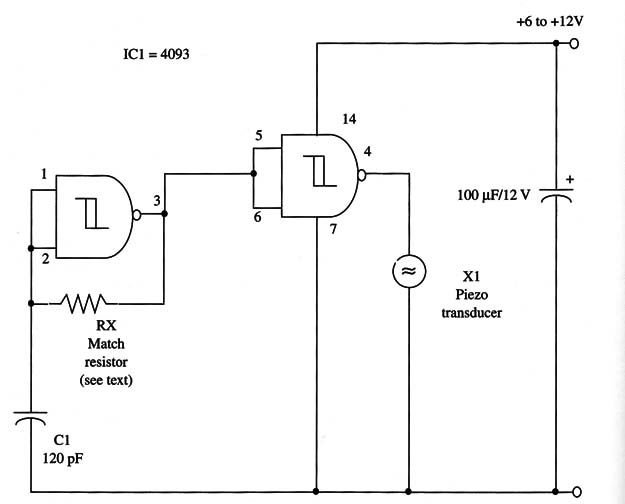Obs. This project is part of one of my books published in Brazil and also translated into English.
Depending on the absorbed atmospheric humidity, the match resistor changes its resistance and thus the oscillator frequency.
Several scientific experiments and demonstrations in science fairs can be devised using this circuit.
Building Rx is easy: wind two or three turns of a 4 or 5 cm long piece of bare wire on each extremity of a wooden match, leaving a length of 2 or 3 cm of the wire to be used as terminals.
Press the wire to affix it without the need of glue or other media.
The resistor is ready to be used.
The described oscillator will produce “clicks” in a transducer.
The click rate is determined by C1 and Rx values.
Using a frequency meter, you can use the circuit to measure atmospheric humidity.
Only two of the four 4093 gates are used in this project, and the output transducer is a piezoelectric transducer.
You can alter the output stage using transistors to drive small loudspeakers.
A complete schematic diagram of this experiment is shown in Fig.1.

The click rate depends on the absorbed humidity.
You can conduct experiments with this sensor using water vapor, heaters, and so on.
IC1 - 4093 CMOS integrated circuit
X1 - Piezoelectric transducer or crystal earphone
Rx - Match resistor (see text)
C1 - 120 pF ceramic capacitor
C2 - 100 µF, 12 WVDC electrolytic capacitor




